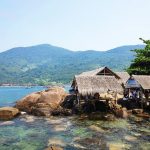Hey there! Farley C here from Elitrawo Blog. Today I want to share with you one of my favorite spots in central Vietnam – the Marble Mountains. Growing up in the region, I've visited these mountains countless times and still discover something new with each visit. Let me take you through this amazing place that's just a short drive from Da Nang city.
List of Contents
- 1. What are the Marble Mountains Vietnam?
- 2. The Five Elements of Marble Mountain Vietnam
- 3. Must-See Attractions at Marble Mountains Da Nang
- 4. Practical Information for Visiting Marble Mountain Vietnam
- 5. Local Legends and Cultural Significance
- 6. My Personal Tips for Visitors
- 7. Why Marble Mountains Should Be On Your Vietnam Itinerary
1. What are the Marble Mountains Vietnam?
The Marble Mountains Vietnam (or Ngũ Hành Sơn in Vietnamese) are basically a cluster of five marble and limestone hills located in Ngũ Hành Sơn District, just south of Da Nang. Each mountain is named after one of the five elements in Eastern philosophy – Kim (metal), Thủy (water), Mộc (wood), Hỏa (fire) and Thổ (earth).
What makes these mountains special to me isn't just their natural beauty but the way they blend spirituality, history, and nature together. I've spent many mornings here capturing photos with my Nikon D7200, especially during the golden hour when the light hits the marble just right.
Did you know that the Marble Mountains were officially recognized as a National Special Relic in January 2019? It's something we locals are really proud of!
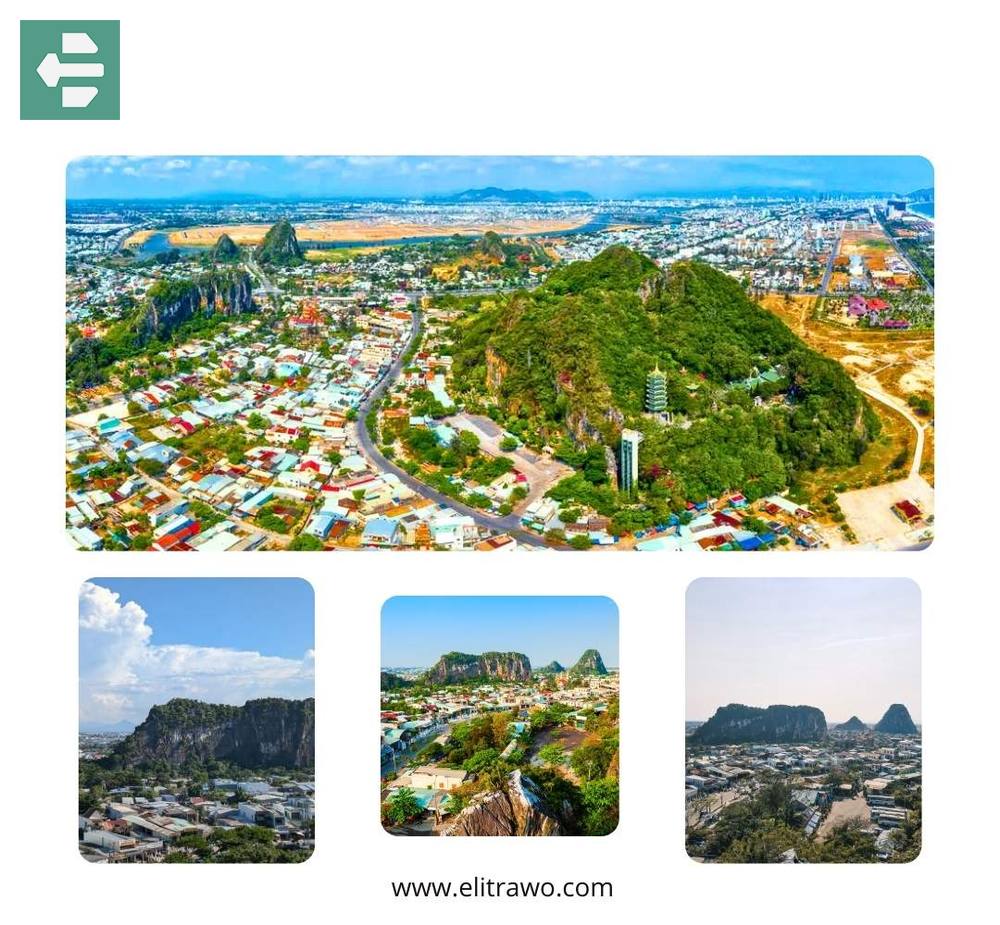
Ever wondered what stories these ancient rocks could tell about our past? Let's take a look at their fascinating history…
1.1. The History Behind Marble Mountain Vietnam
According to scientific explanations, the Marble Mountains were originally small islands in the Eastern Sea (Biển Đông). Over time, they became connected to the mainland due to the formation of the Quang Nam plain. This happened because of the uplifting of the Truong Son mountain range and sedimentation from the Thu Bon River.
But as a local, I grew up with a different story. We believe these mountains are pieces of a broken dragon egg. According to legend, a dragon laid an egg that grew larger each day. When thieves tried to steal it, the Turtle God intervened, and after a blinding flash of light, the egg shattered into five pieces – becoming the five mountains we see today.
During the war of aggression against Vietnam, these mountains played a significant role too. The Vietcong had hidden a hospital inside the caves, “probably within earshot of the American air field and Da Nang Beach,” as some historical accounts mention.
What element does each mountain represent, and which one should you focus on during your visit? Let's find out…
2. The Five Elements of Marble Mountain Vietnam
2.1. Thuy Son (Water Mountain)
Thuy Son is definitely the star of the show and the mountain I recommend spending most of your time on. Standing at about 160 meters high, it's the largest of the five mountains and contains most of the caves and pagodas.
I usually start my photography trips here before dawn to catch the sunrise. There's something magical about being on the mountain when it's quiet, before the tour buses arrive. The path takes you up 156 stone steps, which can be a bit challenging on hot days, but the views are worth it. If you're not up for the climb, there's an elevator for around 15,000 VND (about $0.58 USD or $0.90 AUD at current exchange rates).
Once, during monsoon season, I got caught in a sudden downpour while photographing the caves. The rain created these amazing light patterns as it streamed through the openings in the cave ceiling – one of my favorite photographs to date!
Have you ever wondered what the other mountains have to offer? Let's explore them…
2.2. Kim Son (Metal Mountain)
Kim Son (Metal Mountain) is home to the renowned Quan The Am Pagoda. In 1956, a naturally formed stalactite statue of Quan The Am holding a vase was discovered here. It's about the height of a real person and surrounded by various other natural formations.
2.3. Moc Son (Wood Mountain)
Moc Son features steep, rocky slopes and lies southeast of Thuy Son. Despite its name suggesting lots of vegetation, it's actually known for the Ba Quan Am (Lady Buddha) statue – a natural white marble formation that looks like a seated Buddha. Most tourists miss this mountain, but it's worth a visit if you have time.
2.4. Tho Son (Earth Mountain)
Tho Son is the lowest mountain with a square shape, containing red clay and sandstone. It's less visited but offers a different perspective of the landscape.
2.5. Hoa Son (Fire Mountain)
Hoa Son is located west of Kim Son and is easy to recognize by its distinctive reddish rock. It's known for its marble quarries, though direct rock extraction from the mountains is now banned to preserve their natural beauty.
What amazing sights should you not miss when visiting the Marble Mountains? I've photographed them all, and here are my recommendations…
3. Must-See Attractions at Marble Mountains Da Nang
3.1. Huyen Khong Cave
Huyen Khong Cave is hands down my favorite spot in the entire complex. I've probably photographed it a hundred times, and it never gets old. What makes it special is the natural skylight – an opening in the ceiling that allows sunlight to stream in, creating this mystical beam of light that moves throughout the day.
The best time to visit is between 9-11 AM when the light ray is most dramatic. Inside, you'll find Buddhist altars and statues that have been carefully placed to interact with the natural light. During the war of aggression against Vietnam, this cave served as a hideout for Vietnamese revolutionaries – something that still amazes me whenever I visit.
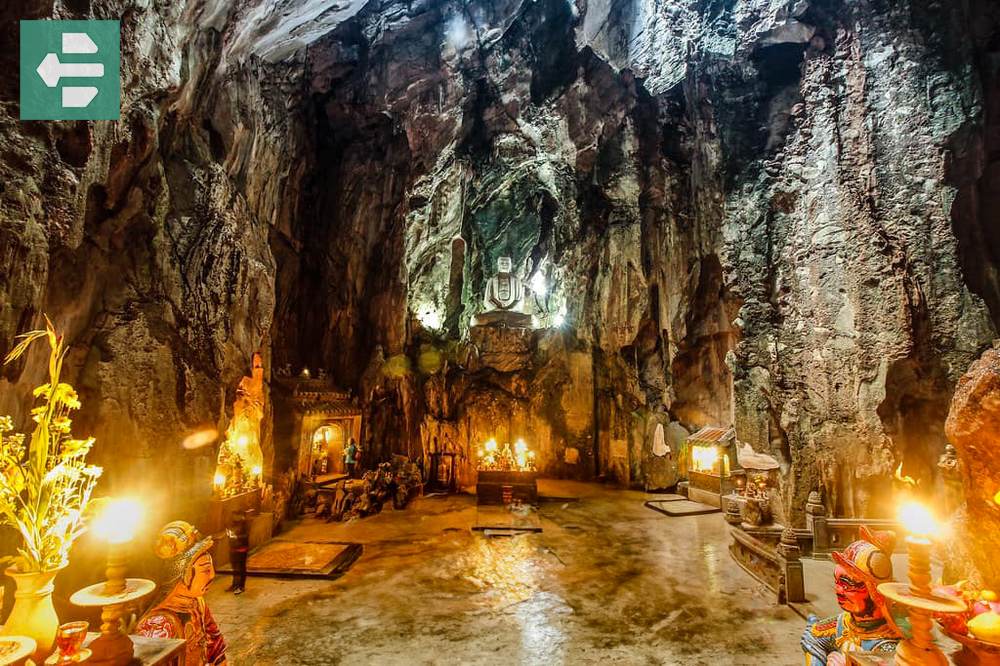
3.2. Am Phu Cave (Hell Cave)
Am Phu Cave is probably the most unique cave I've explored here. Its name translates to “Hell Cave,” and it features representations of heaven and hell according to Buddhist beliefs. The entrance is quite narrow, and you descend into darkness via stone steps.
I remember bringing my foreign friends here – their faces when they saw the hell depictions were priceless! The cave includes carved demons and sinners being punished in various ways. It might sound scary, but it's actually fascinating from a cultural perspective.
3.3. Linh Ung Pagoda
Linh Ung Pagoda on Thuy Son is one of three pagodas with the same name in Da Nang (the others being on Son Tra Peninsula and Bai But). This 200-year-old pagoda features a beautiful 10-meter Buddha statue made from Non Nuoc marble.
Every Lunar New Year, my family visits this pagoda to pray for good fortune. The craftsmanship of the stone statues here showcases the incredible skills of artisans from the nearby Non Nuoc Stone Carving Village, which has existed for more than 400 years.
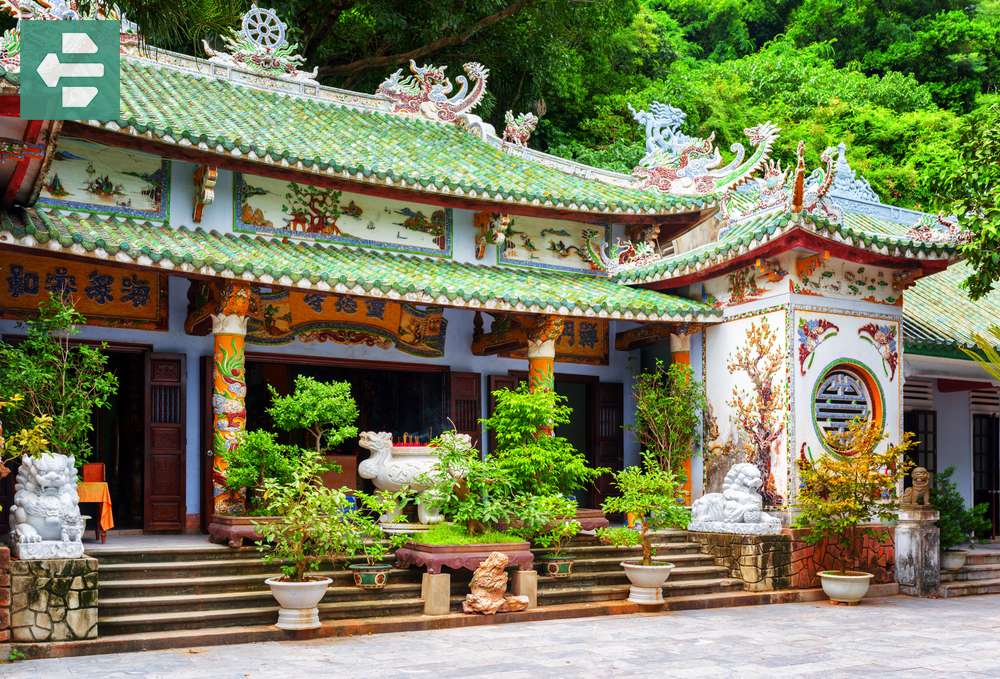
3.4. Tam Thai Pagoda
Tam Thai Pagoda is probably my favorite historical temple in Da Nang. Built in 1826 at King Minh Mang's request, this amazing place has been recognized as a special national heritage site – and for good reason! The architecture follows the traditional Nguyen Dynasty style with those distinctive dual-layer yin-yang tiled roofs that I find so captivating.
When you visit, you'll enter through the Tam Quan Gate – an ancient bell tower with a solemn tiled roof. The spacious courtyard beyond is shaded by old trees that create the perfect atmosphere. I was particularly impressed by the sandstone statue of Maitreya Buddha there. Inside the main hall, you'll find Amitabha Buddha at the center with Avalokitesvara and Mahasthamaprapta Bodhisattvas at his sides.
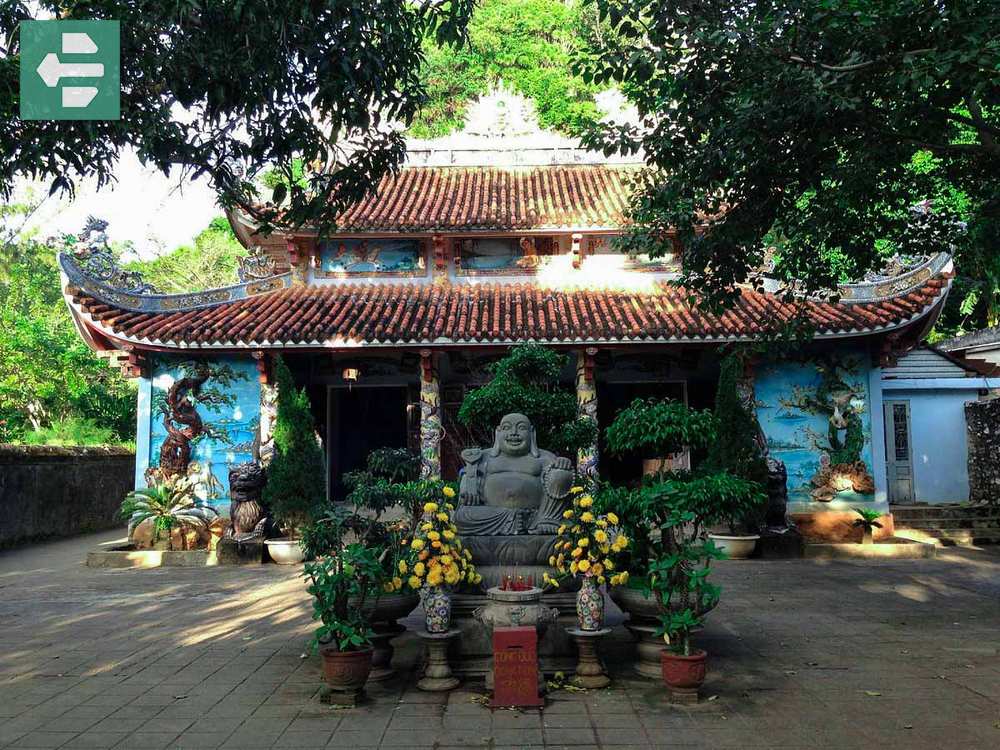
3.5. Tang Chon Cave
Tang Chon Cave has to be one of the most interesting spots in the Marble Mountains. King Minh Mang named it in the 19th century, and the name means “Treasure of Truths” – which feels completely appropriate once you're inside! To find it, look for a small passage behind Linh Ung Pagoda.
What I love most about this cave is its natural open ceiling and five unique chambers. The heritage trees inside are absolutely remarkable – there's a trio of honey locust trees that are 160-210 years old, but the star attraction is definitely the 600-year-old banyan tree.
Make sure to check out the Linh Dong Chon Tien Temple in the largest chamber, and don't miss the 20 memorial steles on the cave walls. They've actually been registered by UNESCO as Asia-Pacific documentary heritage, which makes this place even more special.
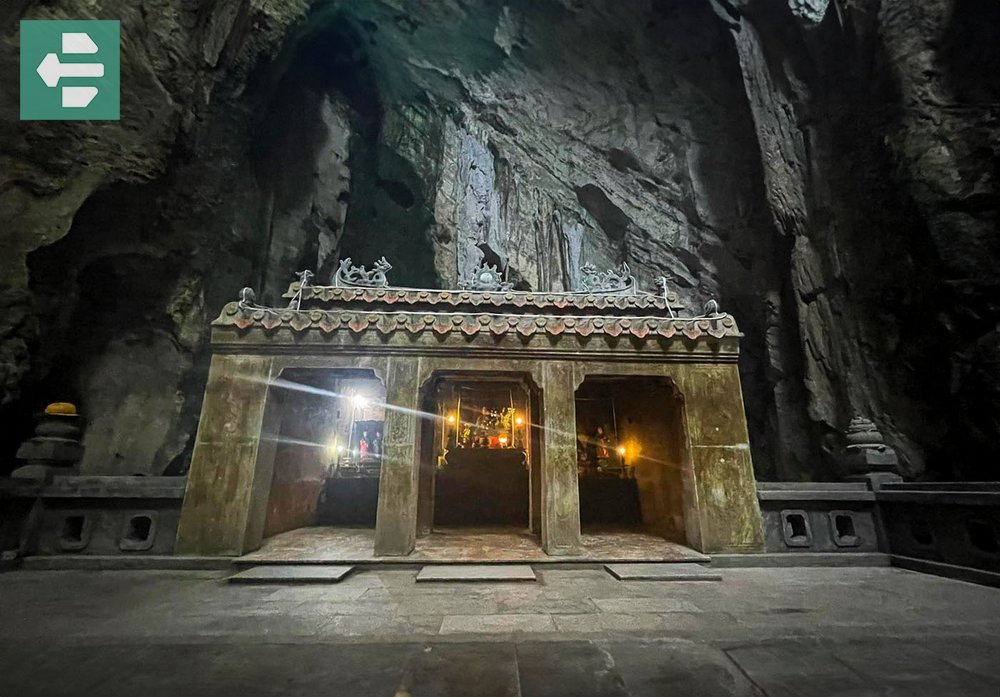
3.6. Xa Loi Tower
Xa Loi Tower is simply breathtaking! Standing 28 meters high on Thuy Son (Water Mountain), it's impossible to miss. I was fascinated to learn it was built between 1997 and 2004, blending Vietnamese, Chinese, Thai, and Roman architectural elements into one impressive hexagonal structure.
The Buddhist symbolism throughout the tower is incredibly thoughtful – its seven levels represent Buddha's first seven steps after birth, while the six sides symbolize important Buddhist concepts like the Six perceptions and Six perfections.
On my visit, I could only access the first floor, which houses shrines to Gautama Buddha and his two main disciples. The upper floors are reserved for shrines to various arhats and bodhisattvas. The seventh floor contains one of Buddha's sacred relics, though it's only accessible to monks and devout Buddhists. Still, just seeing this magnificent tower from the outside is well worth the trip!
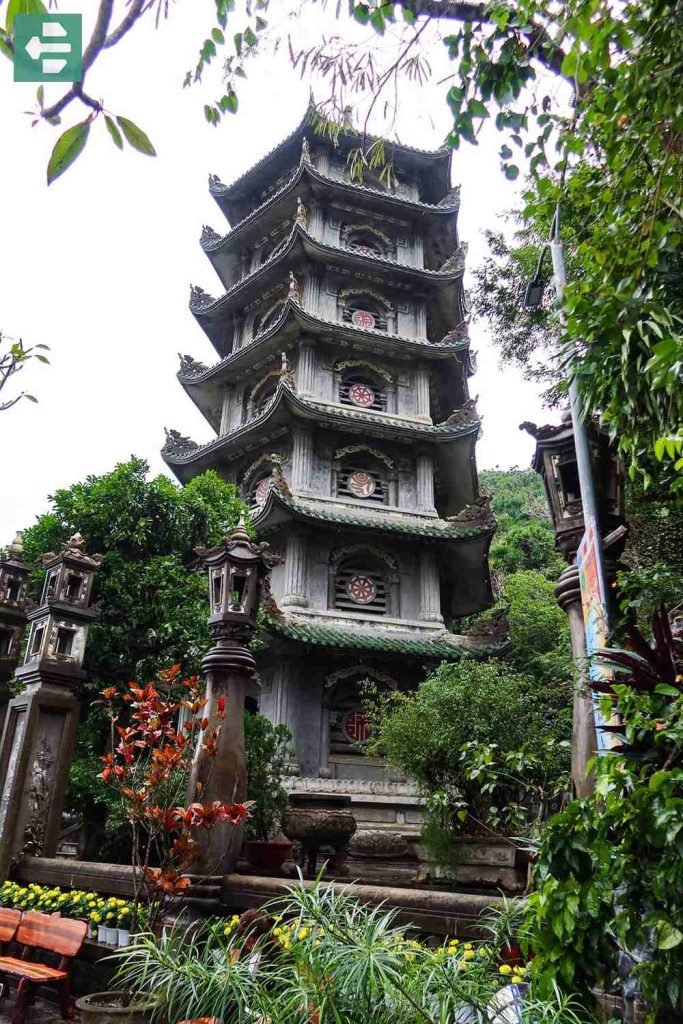
Curious about the practical details for your visit? Let me share some insider tips…
4. Practical Information for Visiting Marble Mountain Vietnam
4.1. Marble Mountain Vietnam Entrance Fee & Exchange Rates
As of May 2025, the Marble Mountain Vietnam entrance fee is 40,000 VND per person (approximately $1.54 USD or $2.38 AUD based on current exchange rates). The elevator to Thuy Son costs an additional 15,000 VND per ride.
For reference, the latest exchange rates show:
- 1 USD = 26,005 VND (as of May 2, 2025)
- 1 AUD = 16,763 VND (as of May 2, 2025)
The mountains are open daily from 7:00 AM to 5:30 PM. I recommend arriving early (around 7:30 AM) to beat both the heat and the crowds.
4.2. Best Time to Visit
In my experience, the best time to visit Marble Mountains is during the dry season from February to July. The period features an average temperature of about 25.7°C, low rainfall, and no typhoons. I particularly love visiting in April when the weather is perfect – not too hot yet and with clear skies for photography.
Weekdays are much less crowded than weekends, and early mornings or late afternoons offer the most pleasant temperatures for climbing.
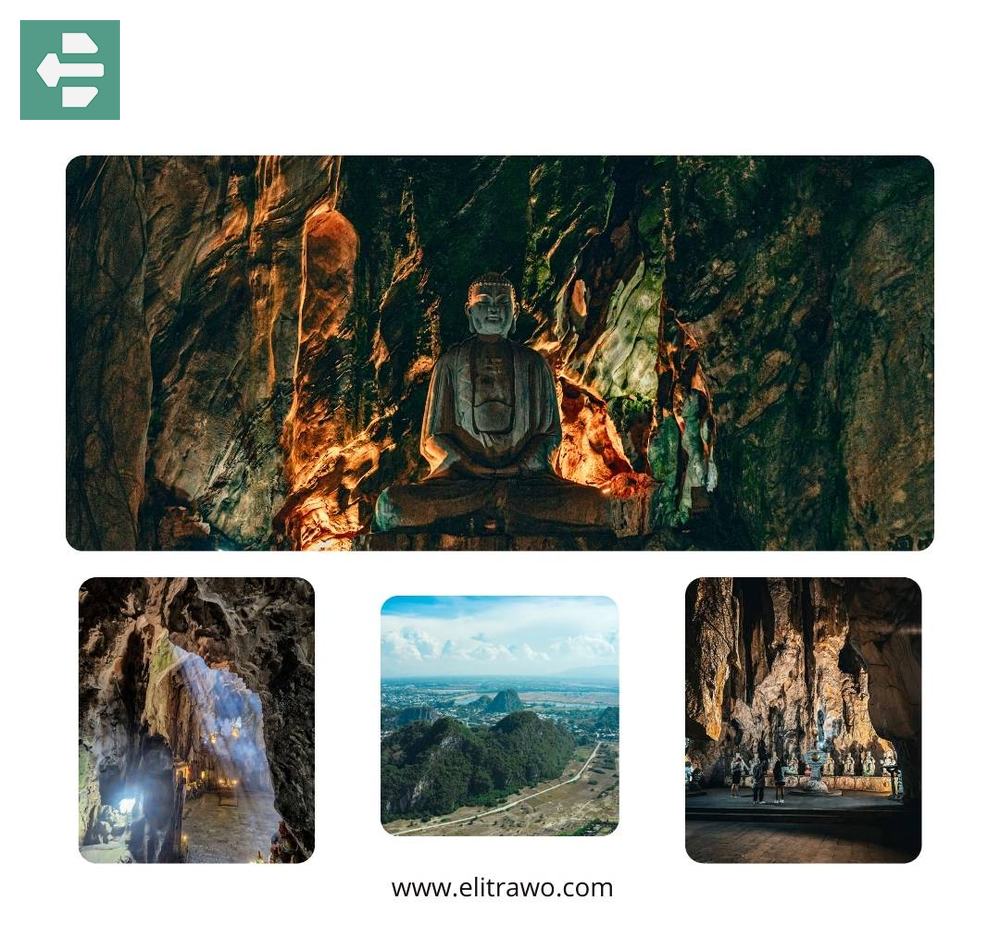
How do you get to these magnificent mountains? Let me explain the options…
4.3. How to Get to Marble Mountain from Hoi An and Da Nang
From Da Nang to Marble Mountain:
- By bus: Take bus number 1 from Da Nang city center (costs about 20,000 VND or $0.77 USD)
- By taxi: A Grab or Vinasun taxi costs around 100,000-150,000 VND ($3.85-$5.77 USD)
- By motorbike: The easiest option if you're comfortable riding. It's only about 15-20 minutes from the city center.
Getting to Marble Mountain from Hoi An:
- By taxi: Costs approximately 250,000-300,000 VND ($9.61-$11.54 USD)
- By motorbike: A pleasant 30-minute ride along the coast
- By tour: Many agencies in Hoi An offer half-day tours for around $15-20 USD per person
I usually recommend motorbike if you're comfortable riding one, as it gives you the most flexibility to explore at your own pace.
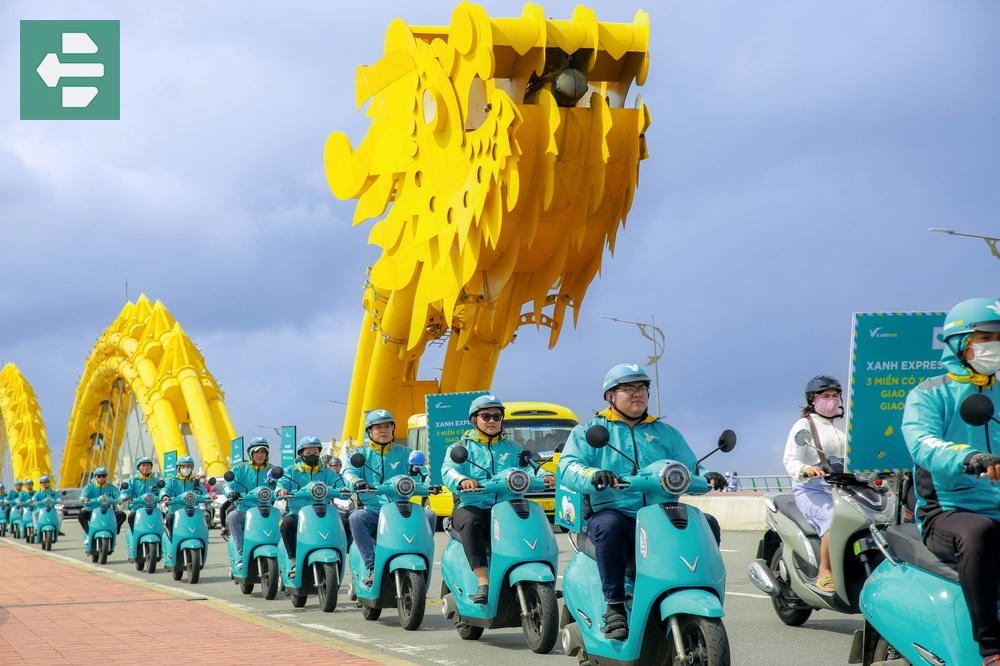
Want to know what makes these mountains truly special? Let me share some local insights…
5. Local Legends and Cultural Significance
As a local, I've grown up with stories about the Marble Mountains Vietnam. Beyond the dragon egg legend I mentioned earlier, these mountains have deep spiritual significance for Vietnamese people.
Many locals believe the mountains possess supernatural energy, especially at certain times like full moons. Buddhist monks have been drawn to the caves here for centuries, seeking spiritual enlightenment through meditation in these naturally formed sanctuaries.
The mountains also house the first Buddhist Cultural Museum in Vietnam, displaying over 200 artifacts. As a photographer, I've spent hours documenting these treasures, each telling a story about our cultural heritage.
The stone carving tradition associated with the mountains dates back hundreds of years. Although direct extraction of marble from the mountains is now prohibited to preserve them, the craft continues with materials brought from Quang Nam Province.
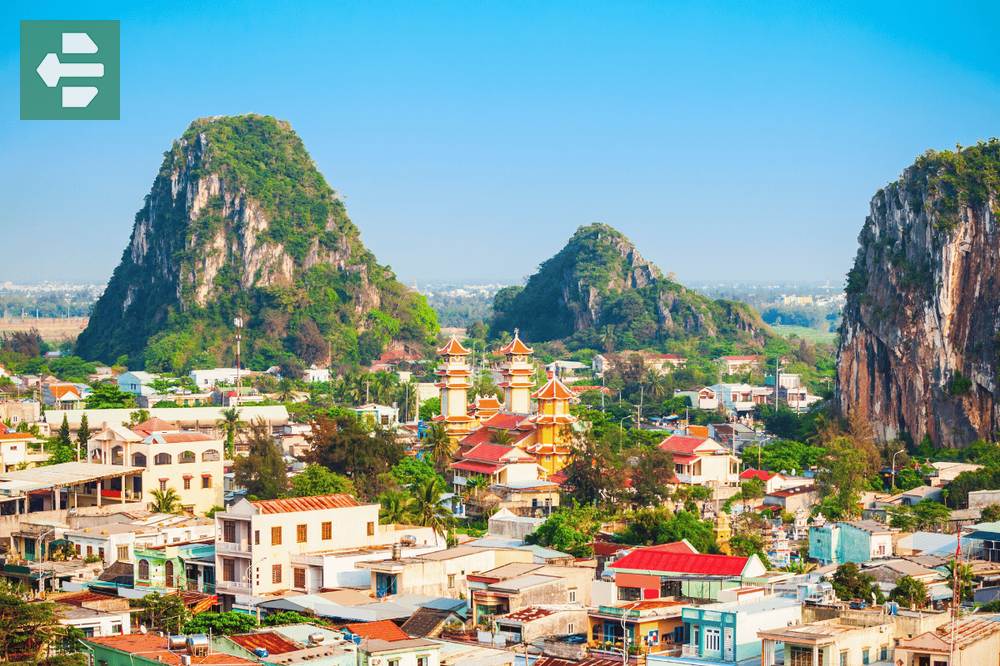
How can you make the most of your visit? Here are some tips from a local…
6. My Personal Tips for Visitors
After countless visits to the Marble Mountains Da Nang Vietnam, here are my insider tips:
- Wear proper footwear – The steps can be slippery, especially after rain. I once saw a tourist trying to climb in flip-flops and it didn't end well!
- Bring water and a small towel – It gets hot, and the climbing will make you sweat. Most of my foreign friends underestimate how quickly they get dehydrated here.
- Visit Non Nuoc Stone Village – Located at the foot of the mountains, this village is where you can see artisans creating incredible sculptures from marble. I often bring visitors here after exploring the mountains.
- Consider booking a guided tour on Viator or GetYourGuide – For as little as $26, you can join a morning small group tour to Marble Mountains, Am Phu Cave, and Monkey Mountain (5 hours, free cancellation). A local guide will share hidden stories and cultural insights you’d likely miss on your own
- Respect the sacred sites – Remember that many areas are active places of worship. Dress modestly and behave respectfully.
- Bargain at souvenir shops – If you're buying marble crafts, friendly negotiation is expected. Start at about 60% of the initial asking price.
- Combine with My Khe Beach – After a morning of climbing, head to My Khe Beach (about 15 minutes away) for a refreshing swim and lunch at a seafood restaurant.
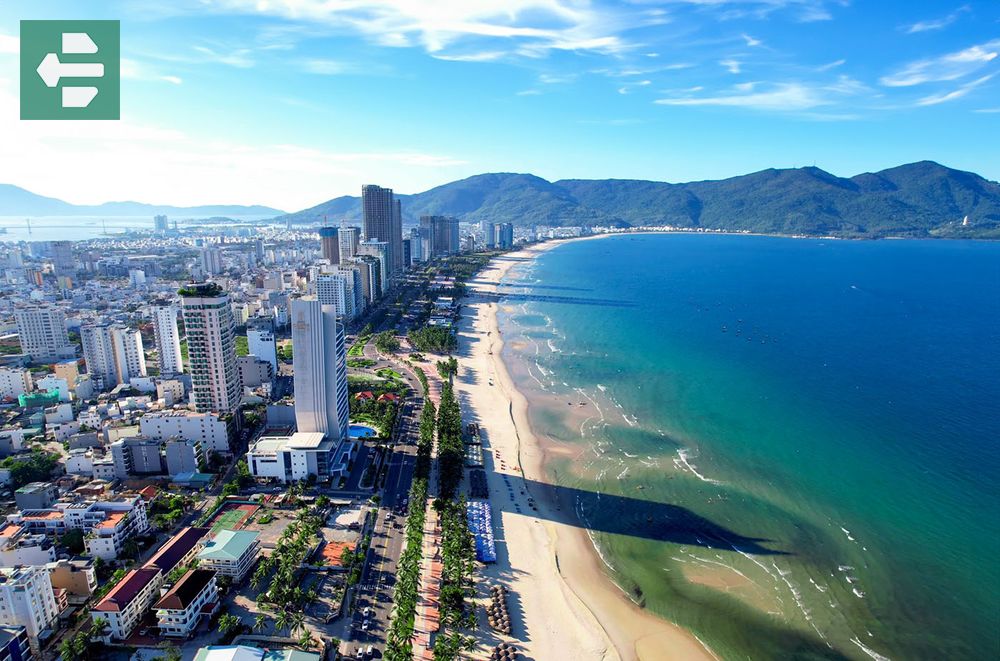
Wondering how the Marble Mountains compare to other attractions in the area? Let me share some context…
7. Why Marble Mountains Should Be On Your Vietnam Itinerary
Having grown up in central Vietnam and traveled extensively throughout the country, I can confidently say that the Marble Mountains offer something uniquely special.
Unlike the commercialized atmosphere of some other attractions, the mountains maintain a sense of authenticity and spiritual calm. They're less crowded than Hoi An Ancient Town but offer equally rich cultural experiences.
For photographers like me, the interplay of light in the caves creates opportunities for stunning images that you can't find elsewhere. The elevated position also provides spectacular views of Da Nang, the coastline, and the surrounding countryside.
What I love most is how the mountains connect different aspects of Vietnamese culture – our spiritual practices, craftsmanship, natural beauty, and even our wartime history – all in one accessible location.
Whether you're in Da Nang for a few days or just passing through between Hue and Hoi An, I'd recommend setting aside at least half a day for exploring this magical place. It's one of those rare attractions that appeals to everyone – history buffs, adventure seekers, spiritual travelers, photographers, and those simply looking for beautiful views.
Have you visited the Marble Mountains Vietnam yet? If you have any questions about planning your visit, feel free to reach out through my blog. I'm always happy to help fellow travelers discover the beauty of my homeland!



